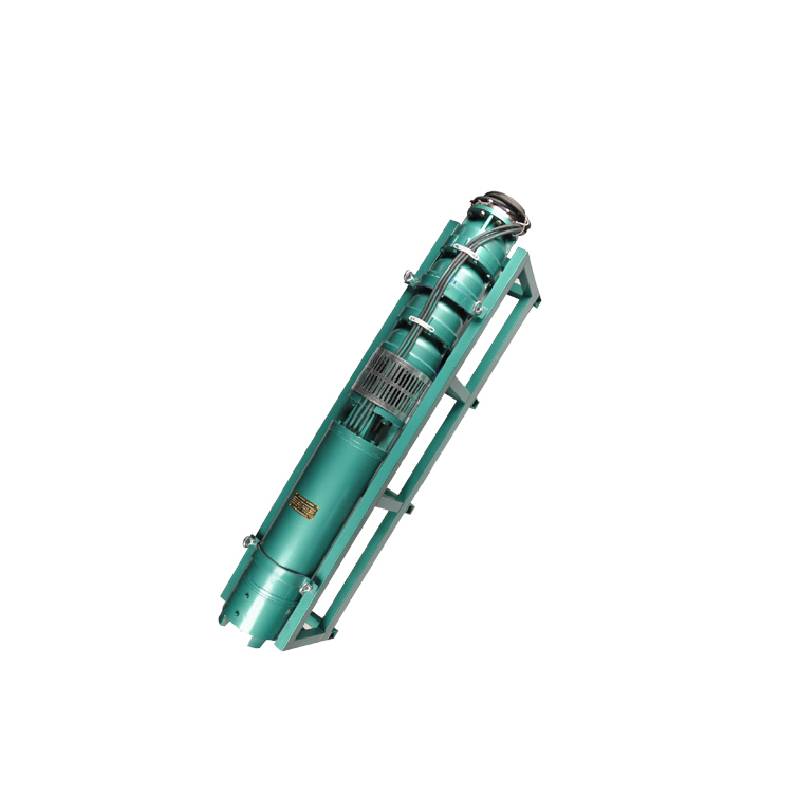Sep . 28, 2024 20:16 Back to list
Guidelines for Selecting the Right Submersible Well Pump Size
Understanding Submersible Well Pump Sizing A Comprehensive Guide
When it comes to ensuring a reliable supply of water from a well, selecting the right submersible well pump is crucial. One of the key factors in making an informed decision is understanding the sizing of these pumps. Proper sizing affects not only the pump's performance but also its longevity, efficiency, and operational cost.
What is a Submersible Well Pump?
A submersible well pump operates underwater, typically installed in wells deeper than 25 feet. Unlike vertical pumps, which draw water up, submersible pumps push water to the surface, making them more efficient for deep well applications. These pumps consist of a sealed motor and a pump body that operates submerged in the water, keeping them cooled and lubricated.
The Importance of Sizing
Choosing the right size of pump entails calculating the required flow rate and the total dynamic head (TDH). An incorrectly sized pump can lead to several issues such as inadequate water supply, increased energy costs, and even premature pump failure.
Key Factors in Sizing a Submersible Well Pump
1. Flow Rate This is the volume of water the pump can deliver in a specific time, usually measured in gallons per minute (GPM). To determine the required flow rate, consider your water usage needs, which may vary based on household size, agricultural demands, or commercial use. For residential applications, a flow rate between 5 to 20 GPM is typical, while agricultural or industrial settings may require much higher rates.
submersible well pump sizing chart

2. Total Dynamic Head (TDH) This measurement encompasses the total vertical distance the water must be lifted in addition to the various friction losses that occur due to the length and diameter of the piping. TDH is calculated by adding the static head (the height from the water level in the well to the discharge point) and the friction head (the resistance to flow in the pipes). Understanding the TDH is crucial as it directly influences the power required by your pump.
3. Well Diameter The diameter of the well should also be considered. Submersible pumps are designed to fit within specific well diameters, which can affect the selection process. For instance, a standard residential well is usually about 4 inches in diameter; therefore, you’d need a submersible pump that fits within this limitation.
4. Pump Material and Type Pumps are constructed of various materials such as stainless steel, thermoplastic, or cast iron. Choosing materials that can withstand the conditions of your well—such as corrosive water or variable temperatures—is vital. Moreover, different types of pumps (standard, high-efficiency, or variable speed) cater to specific needs and applications.
Using a Sizing Chart
A submersible well pump sizing chart allows users to find the most suitable pump based on the calculated flow rate and TDH. These charts typically present various pump models along with their specifications, enabling quick comparisons.
To utilize a sizing chart effectively, identify your needs for flow rate and TDH accurately. Then, cross-reference these requirements against the chart to find a pump with adequate capacity. Keep in mind that while sizing charts can be extremely helpful, they are best used as a guideline.
Conclusion
Selecting the proper submersible well pump is a critical step in ensuring a sustainable water supply. By accurately determining the flow rate and TDH, considering well diameter, and reviewing material and pump type, users can make informed decisions. Sizing charts provide a valuable resource in this process, simplifying the selection of an appropriate model. Before proceeding with a purchase, consulting with a professional is advisable, especially for unique or more complex applications. Proper pump sizing not only optimizes performance but also enhances the longevity and efficiency of the system, ultimately contributing to lower operational costs and improved water accessibility.
-
Submersible Water Pump: The Efficient 'Power Pioneer' of the Underwater World
NewsJul.01,2025
-
Submersible Pond Pump: The Hidden Guardian of Water Landscape Ecology
NewsJul.01,2025
-
Stainless Well Pump: A Reliable and Durable Pumping Main Force
NewsJul.01,2025
-
Stainless Steel Submersible Pump: An Efficient and Versatile Tool for Underwater Operations
NewsJul.01,2025
-
Deep Well Submersible Pump: An Efficient 'Sucker' of Groundwater Sources
NewsJul.01,2025
-
Deep Water Well Pump: An Efficient 'Sucker' of Groundwater Sources
NewsJul.01,2025
-
 Submersible Water Pump: The Efficient 'Power Pioneer' of the Underwater WorldIn the field of hydraulic equipment, the Submersible Water Pump has become the core equipment for underwater operations and water resource transportation due to its unique design and excellent performance.Detail
Submersible Water Pump: The Efficient 'Power Pioneer' of the Underwater WorldIn the field of hydraulic equipment, the Submersible Water Pump has become the core equipment for underwater operations and water resource transportation due to its unique design and excellent performance.Detail -
 Submersible Pond Pump: The Hidden Guardian of Water Landscape EcologyIn courtyard landscapes, ecological ponds, and even small-scale water conservancy projects, there is a silent yet indispensable equipment - the Submersible Pond Pump.Detail
Submersible Pond Pump: The Hidden Guardian of Water Landscape EcologyIn courtyard landscapes, ecological ponds, and even small-scale water conservancy projects, there is a silent yet indispensable equipment - the Submersible Pond Pump.Detail -
 Stainless Well Pump: A Reliable and Durable Pumping Main ForceIn the field of water resource transportation, Stainless Well Pump has become the core equipment for various pumping scenarios with its excellent performance and reliable quality.Detail
Stainless Well Pump: A Reliable and Durable Pumping Main ForceIn the field of water resource transportation, Stainless Well Pump has become the core equipment for various pumping scenarios with its excellent performance and reliable quality.Detail
